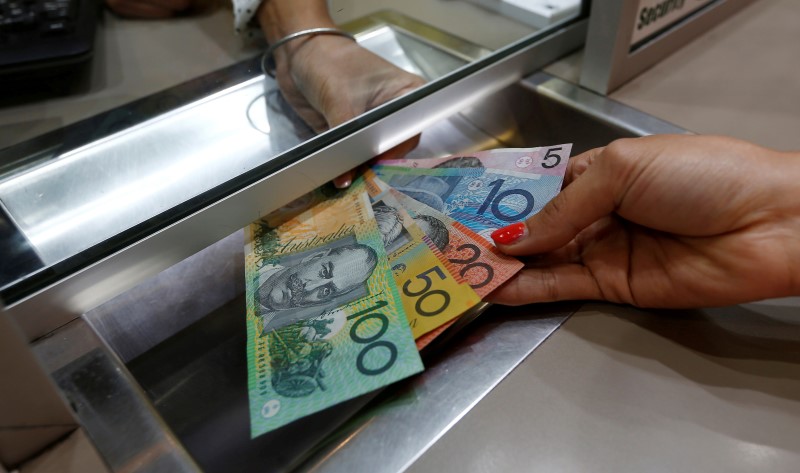SYDNEY, Dec 13 (Reuters) - The Australian and New Zealand dollars were firm as their U.S. counterpart lost its mojo ahead of the Federal Reserve's two-day policy meeting starting later on Tuesday.
The Australian dollar AUD=D4 nudged up to $0.7495, from Monday's low of $0.7431, edging closer to a one-month peak of $0.7510.
The 75 cents area has proved a strong chart barrier, and a sustainable break above would open the door to $0.7546, the 50 percent retracement of the November retreat from $0.7778 to $0.7311.
The Aussie drew support from rising commodity prices, particularly iron ore, Australia's largest export earner.
Also underpinning it were low short-term yields in the euro that reinforced the appeal of carry trades, where investors borrow euros and yen at cheap rates to invest in higher yielding currencies such as the Aussie and kiwi.
Yields on the 10-year New Zealand government bond NZ10YT=RR reached 3.3 percent, the highest since January. The Australian equivalent fetched 2.8 percent AU10YT=RR , not far from a one-year peak of 2.9 percent touched on Monday.
The euro stood at A$1.4186 EURAUD=R , having gone as far as A$1.4104 on Monday and nearing its lowest in 18 months.
Against the kiwi, the euro held at NZ$1.4788 EURNZD=R and a break under NZ$1.4711 would be the lowest since May 2015. The euro is down around 7 percent this year.
The Antipodean currencies were also near multi-month peaks against the yen, last trading at 86.19 yen AUDJPY=R and 82.70 yen NZDJPY=R .
A survey showed Australian business conditions softened in November for a second month, while house prices moderated in the third quarter. The second-largest city of Melbourne showed the biggest increase, at 6.9 percent for the year. New Zealand dollar NZD=D4 stood at $0.7190, having risen 0.7 percent in the previous session. Resistance was found around 72 cents with support at $0.7140.
It is up 5.3 percent so far this year, largely due to its yield appeal and a robust domestic economy.
The kiwi easily weathered a national leadership change following last week's surprise resignation of Prime Minister John Key. On Monday, Bill English was confirmed as the new leader.
New Zealand government bonds 0#NZTSY= edged up, sending yields between 2 and 3 basis points lower across the curve.
Australian government bond futures rose, with the three-year bond contract YTTc1 up 2.5 ticks at 98.055. The 10-year contract YTCc1 , which earlier on Tuesday touched an 11-month trough, gained 3 ticks to 97.1975.
The spread between 10- and 3-year bonds widened to 86 basis points, the largest in more than one year. The next big level is the July 2015 peak of 100 basis points. (Editing by Richard Borsuk)
